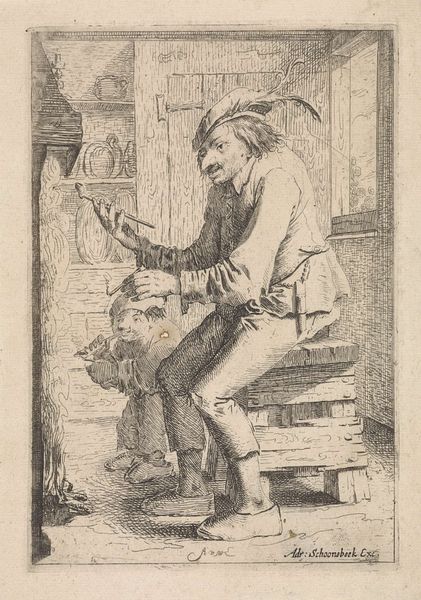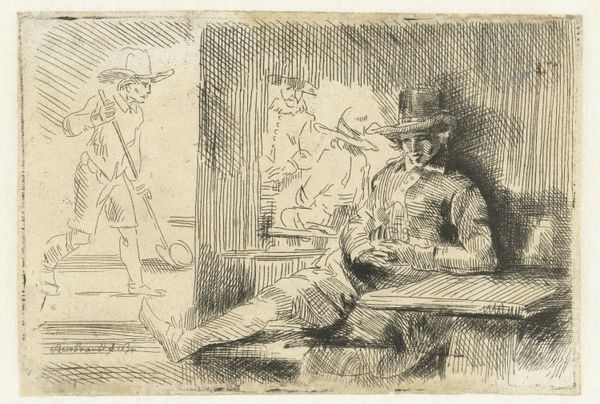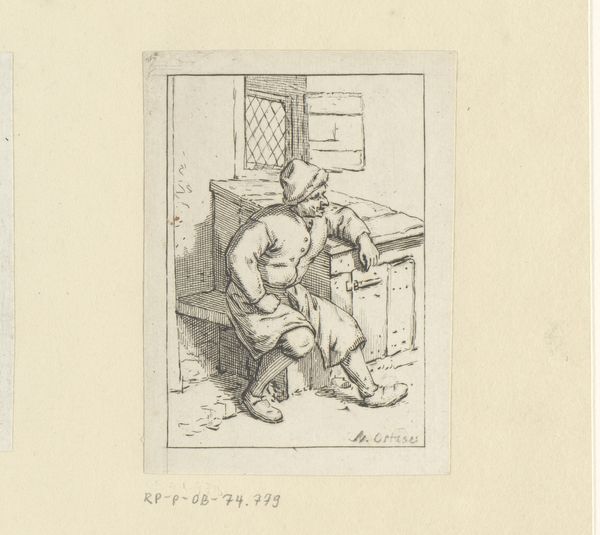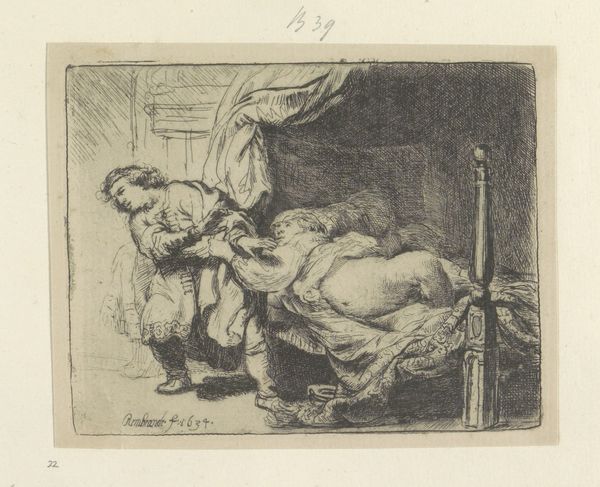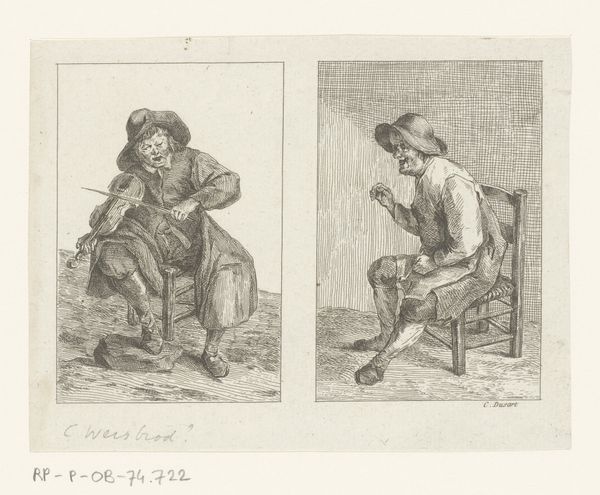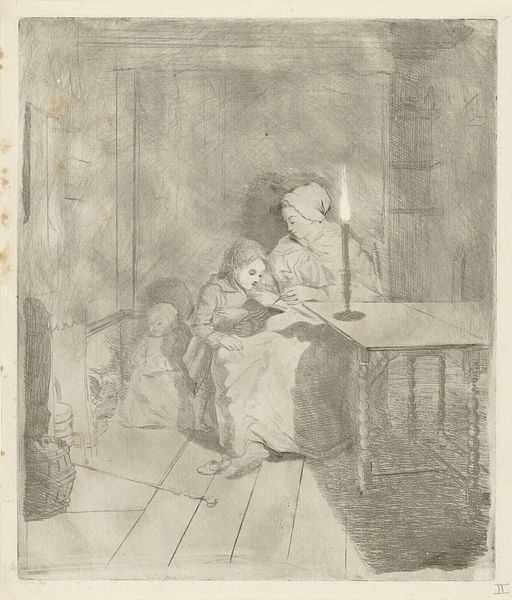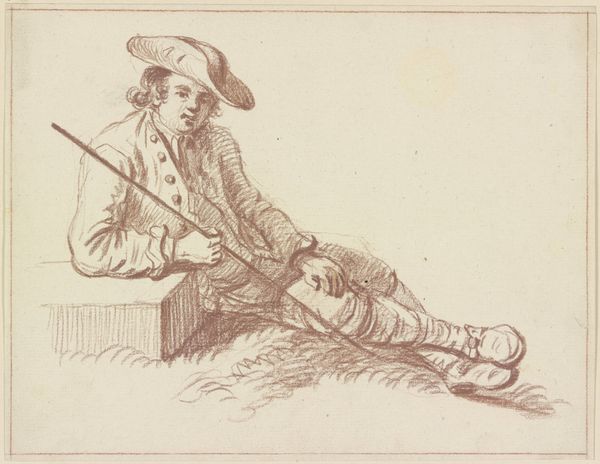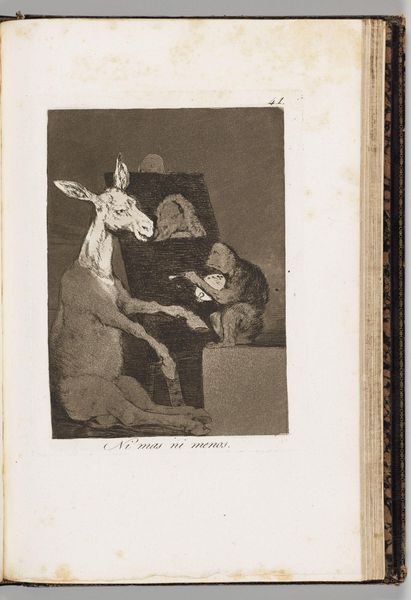
drawing, etching
#
drawing
#
dutch-golden-age
#
etching
#
landscape
#
figuration
#
genre-painting
Dimensions: height 95 mm, width 143 mm
Copyright: Rijks Museum: Open Domain
Editor: This etching, called "Kolfspel", is attributed to Rembrandt van Rijn, and its creation date ranges from 1654 to 1808. The composition strikes me as unconventional – a curious juxtaposition of activity and repose. What visual elements stand out to you, especially considering Rembrandt's formal techniques? Curator: Observe how Rembrandt exploits the linear quality of etching to define forms, create texture, and modulate light. Notice the stark contrast between the dynamic golfer and the seated figure, rendered in a denser network of lines. What effect do you think that Rembrandt was going after by doing this? Editor: The golfer is all action while the seated figure blends into the heavy shading in the interior, to suggest inertia and reflection. Does the diagonal line created by the golfer's movement compete against all those vertical lines? Curator: Indeed, that is something that may create unease and tension. Those very dark lines give spatial depth to the depicted space, defining the contrast between interior and exterior areas and adding tension within the artwork, by offsetting that energetic figure in the left against a person taking time off in the shadowy area. Editor: So it seems there's a deliberate play of opposing forms at work here – activity versus stillness, light versus shadow. I noticed that this is common in many Dutch Golden Age paintings and how they incorporate landscapes. What did you think of that? Curator: Yes, precisely. And by observing closely at the relationship between figure and space we note Rembrandt's genius compositional tactic for generating an image filled with psychological complexity. Editor: Thanks! It is clear Rembrandt is a master. Curator: Indeed! Close observation reveals just how much this composition relies on very controlled application of formal components for a truly interesting image!
Comments
No comments
Be the first to comment and join the conversation on the ultimate creative platform.

